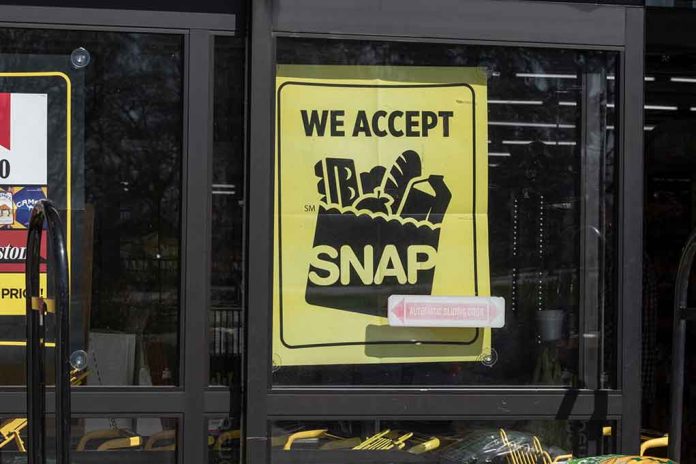
Learn the 8 Things You NEED to Know About the SNAP Program Here!
(UnitedReader.com) – Every year, tens of millions of Americans face food insecurity and nutritional deficits. Fortunately, the US Department of Agriculture (USDA) runs a federal program called Supplemental Nutritional Assistance Program (SNAP) to help address hunger nationwide. In 2020, during the pandemic and quarantines, the program helped feed as many as 41 million low-income recipients, giving them access to healthy food choices. Here are X things everyone really should know about SNAP.
1. What Is SNAP?
Formerly called Food Stamps, each state individually administers this federally-funded program and sets some qualifying criteria. However, recipients must meet specific minimum federal requirements. The program seeks to aid low-income families struggling to put food on the table. About 33% of SNAP beneficiaries are individuals who are older or disabled, while 66% are families with children.
2. Who Qualifies for SNAP?
Each state’s requirements differ slightly, so recipients should apply directly to their state’s SNAP agency. However, federal guidelines state those who receive SNAP must make at or below 130% of the poverty line. Specifically, that means recipients must:
- Make less than $2,379 per month ($28,550 per year) for a three-person household unless the family includes a member aged 60 or older or disabled, exempting the family from these limits.
- Make less than the poverty line when adjusting income for household deductions — rent, food, childcare, and utilities — resulting in less than $1,830 per month ($21,960 per year) for a three-person household.
- Have assets totaling no more than $2,500 for households without a member aged 60 or older or having a disability and $3,750 for those families with older or disabled members.
Even college students might qualify for SNAP benefits as long as they’re enrolled as part-time students and meet all the other financial requirements. Students might need to work at least 20 hours weekly through a work-study program or standard employment if they aren’t supporting small children.
3. How Much Assistance Might SNAP Recipients Receive?
The average SNAP benefit is $239 per month, according to the USDA Food and Nutrition Service department. Still, the monthly amount SNAP awards a recipient is dependent on several factors, including where the recipient lives, the number of family members, whether the recipient receives childcare or children are in school, income, household bills, and savings.
Still, based on fiscal year 2022, these were the expected SNAP household benefits:
- One-person: $175 per month
- Two-person: $334 per month
- Three-person: $520 per month
- Four-person: $638 per month
- Five-person: $748 per month
Given inflation, these amounts are subject to change.
4. What Can Recipients Purchase with SNAP Benefits?
Families can purchase any household food items that are not sold hot at the point of sale. For instance, many grocery stores sell hot fried chicken in their deli departments. SNAP recipients could not purchase the hot fried chicken from the deli. However, they could buy cold leftover fried chicken to take home for a meal. Families can also purchase seeds and plants that produce food, like tomato plants or carrot seeds.
Recipients may not use SNAP benefits to purchase alcohol, tobacco, live animals (fish, shellfish, or fresh meat must be slaughtered and dressed before sale), pet food, vitamins, supplements, medicine, cleaning supplies, paper products, hygiene products, or cosmetics.
5. Are SNAP Purchases Taxable?
Stores generally can’t charge tax on SNAP purchases. The only exception is when the shelf price of a food item includes all applicable taxes, and the cash register price does not break taxes out separately during the checkout process.
6. How Do Recipients Use SNAP Benefits?
After approval, families receive a specialized debit card, called an Electronics Benefits Transfer (EBT). Each recipient will select a four-digit personal identification number (PIN) for their EBT. The state electronically loads monthly benefit amounts onto the EBT, which recipients can use at stores as they would a debit card, using the PIN for secure checkout at any locations accepting EBT cards, including grocery stores, farmer’s markets, warehouse stores, convenience stores, pharmacies, and similar sites. Ask a sales associate to confirm the store’s participation or look for a state-issued sign indicating the store takes SNAP when in doubt.
7. How Quickly Can Recipients Receive SNAP Benefits?
Families can apply for benefits online in most states. Generally, there’s a phone interview to assess eligibility and the benefit amount after completing the application. SNAP agencies might ask for additional information or request an in-person interview. Proof of identification, citizenship, and residency are all standard information requests, as are inquiries requesting documentation of income and expenses or medical costs and extraordinary expenses which recipients might be using to justify their applications. On average, it may take up to 30 days to complete the process and receive benefits.
In cases of extreme poverty, an expedited process may retroactively approve benefits for families living in extreme poverty. In those cases, benefits begin on the date of the application instead of the day of approval.
8. How Long Will SNAP Benefits Last?
Eligible families usually receive six months of SNAP benefits before applicants must requalify. The state agency usually sends a reminder to reapply towards the end of this time. Generally, recipients can reapply online, but it’s vital to note any significant changes because benefits could change.
The SNAP program provides access to healthy, nourishing food to help families face challenging times. The SNAP program gives families the hand-up they need to become self-sufficient again because hunger can be devastating physically, mentally, and emotionally. For more information on state-specific eligibility requirements and the SNAP program, visit Benefits.gov.
Copyright 2022, UnitedReader.com














